The Pentagon will launch development of the B61 Mod 13 strategic thermonuclear bomb
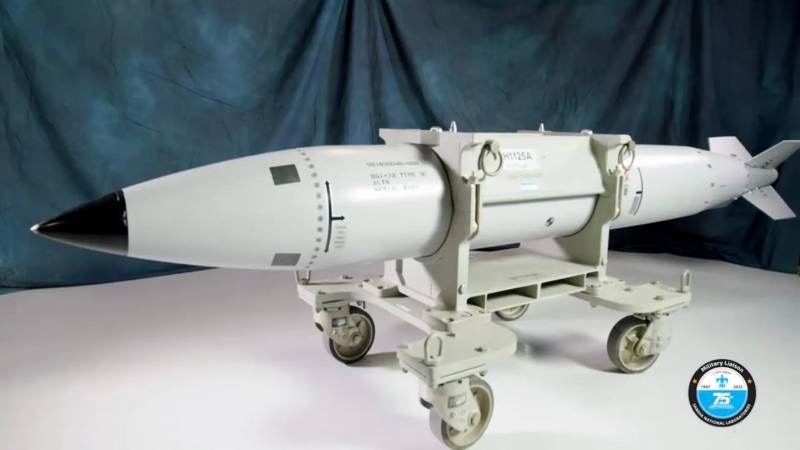
Model of aerial bomb B61 Mod 12
The Pentagon has radically revised its plans for nuclear development weapons. In order to quickly rearm the strategic combat aviation and obtaining the desired capabilities, it was decided to begin right now the development of a new modification of the existing B61 thermonuclear bomb. The Mod 13 version of the product will be built on the basis of existing versions of the B61, which have the necessary qualities.
New plans
In 2017, amid development work on the B61 Mod 12 bomb, the US National Nuclear Security Administration (NNSA) revealed general plans for the further development of tactical and strategic nuclear weapons for the Air Force. Over the next two decades, it was planned to maintain the existing arsenal with certain changes as necessary. In 2037, they were going to start developing a new modification of the B61 bomb. In 2050, the B61 Mod 13 product was supposed to enter service.
Such plans remained valid to this day, but on October 27, the Pentagon officially announced the adoption of a new plan. It is reported that in recent months, experts from the military department and NNSA have been studying the current situation and scenarios for its possible development, and also looking for ways to further develop nuclear weapons.
In response to changes in the military-political situation and the emergence of new threats, it was decided to speed up the process of developing nuclear weapons. The development of the next bomb of the B61 family is no longer going to be postponed until the end of the next decade. The Mod 13 project will be launched in the very near future.
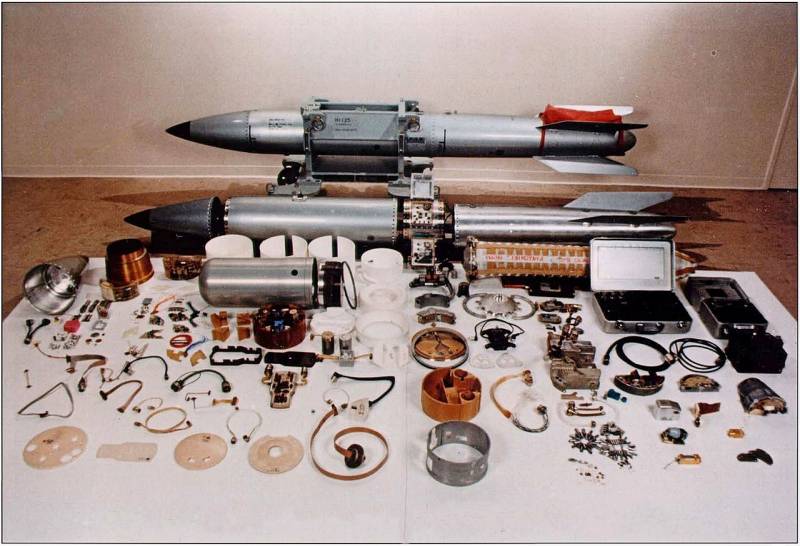
B61 one of the first modifications in disassembled form. The silver cylinder near the head of the hull is a nuclear warhead
In the official announcement of the update of plans, the Pentagon provided some technical and tactical data. In particular, it is reported that the promising B61-13 bomb will improve and expand the combat capabilities of strategic aviation, but will not lead to an increase in the size of arsenals - and will not increase production and maintenance costs.
Reportedly, NNSA and the Ministry of Defense are ready to begin development of the next modification of aircraft nuclear weapons in the near future. However, the fate of this proposal and the subsequent draft remains up to Congress. To start development, it is necessary to obtain permission from legislators and appropriate funding. The costs of the project are proposed to be included in the budget for the new fiscal year 2024, which has not yet been adopted.
Possible appearance
All details of the technical specifications for the promising aerial bomb are unknown. However, a recent official publication reveals the main ideas of the new project and allows us to make assumptions or conclusions. In general, we are talking about using already proven development methods, solutions and components - as is the case with a number of previous modifications of the B61 product.
The new B61-13 bomb will actually be developed on the basis of the existing B61 Mod 7 ammunition in service. Production of the promising model will be established at the expense of the existing arsenal of older products. Mod 7 bombs will be repaired, rebuilt and re-equipped according to the modern Mod 13 design.
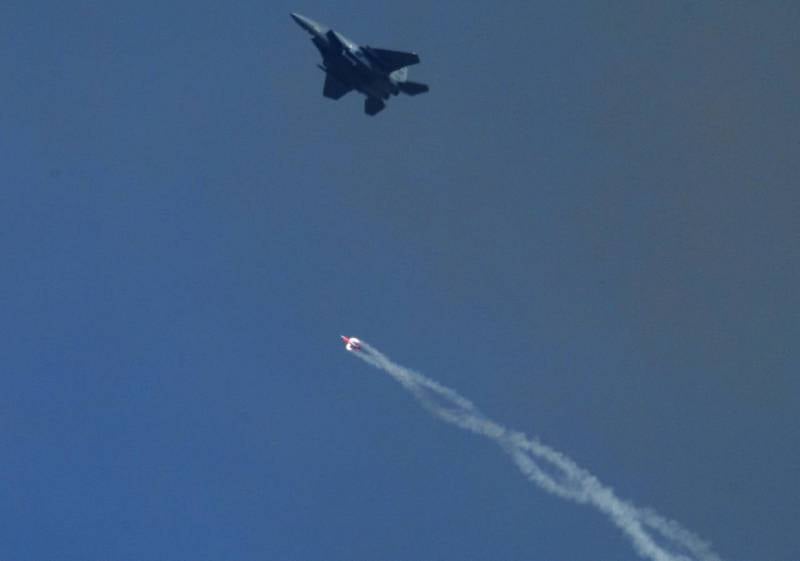
Flight testing of the B61-12 product
It should be noted that the B61-7 was created in the same way - at the turn of the eighties and nineties, these products were rebuilt from the available B61 Mod 1. Moreover, unlike other bombs of the family, it is positioned as a strategic weapon.
Pentagon reports suggest that there will be no radical changes to the original design. Apparently, the new version of the bomb will retain an elongated, streamlined body with a tail unit and rudders. Externally and in size, the B61-13 will not differ from the recently adopted B61-12. The length of the latter reaches 3,6 m, diameter – 330 mm. Weight – at least 300-400 kg.
It should be expected that the B61-13 will use the warhead from the B61-7, with no or minimal modifications. According to known data, modifications Mod 1 and Mod 2 used a common thermonuclear charge with adjustable power: there are four installations with an output from 10 kt to 340 kt. It is likely that a fuse with contact and high-altitude detonation modes will remain. At the same time, modern controls, protection, etc., borrowed from the Mod 12 product, will be installed.
One of the main goals of the project is to improve the accuracy of hitting targets. The corresponding capabilities will be transferred from the existing B61-12 project. According to known data, the latter is equipped with satellite and inertial navigation equipment, as well as rudders. Using these means, the bomb is able to adjust the trajectory of its fall, reducing the possibility of a miss.
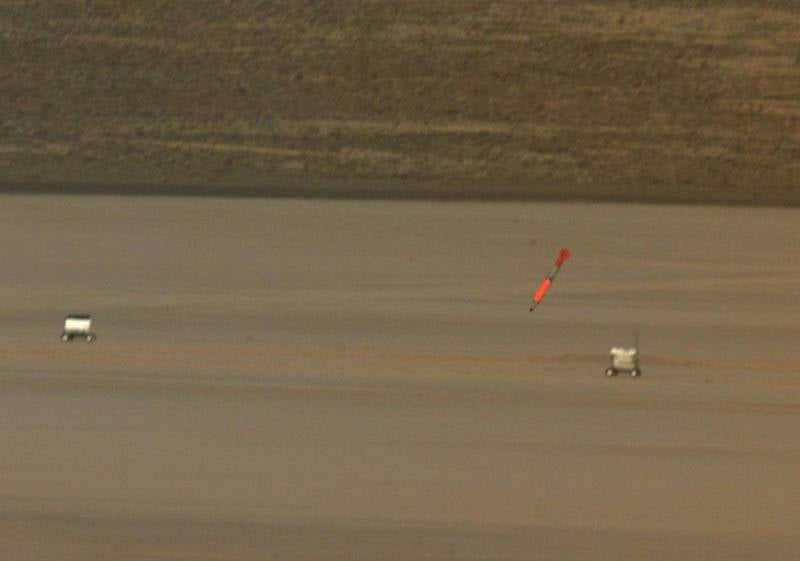
Defeat of the training goal
The B61-7 is a strategic munition and is currently only carried on the B-2A long-range bomber. The new bomb, in light of the expected timing of its appearance and introduction, will also be able to be used by the next generation B-21 bombers. No further expansion of the range of speakers is expected.
Challenges and opportunities
In general, it is not difficult to understand why the Pentagon has revised its plans for the development of nuclear weapons and is going to launch a new project, and as soon as possible. First of all, we are talking about the overall modernization of nuclear arsenals as part of larger programs and plans. The state of the US strategic and tactical nuclear forces has long been a topic of criticism, and almost any promising project is of particular value in this context.
The B61 Mod 13 project will allow the Pentagon to save money. It proposes a redesign of one of the existing B61 bombs, replacing some of the devices and gaining new capabilities. This approach has been used repeatedly in the creation of new examples of the B61 family, for example, in the latest Mod 12 project. Now it will be used in the B61-13 project. With all this, changes to the original design will be limited, which will allow you to get all the results without a significant increase in cost.
It is obvious that the Pentagon plans not only to update its arsenals and save money. The proposed appearance of the B61-13 product shows that one of the main goals of the project is to improve the combat qualities of the aerial bomb. This will be done through a standard control system, which will be the main difference between the promising Mod 13 and the base B61-7. Obviously, a QUO of no more than meters or tens of meters will make it possible to more fully use the potential of a 10-340 kt warhead.
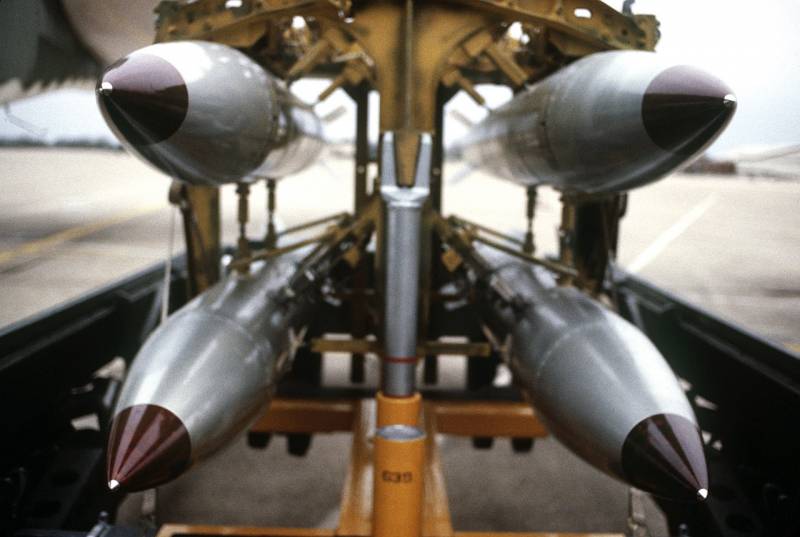
If successfully completed, the B61-13 project could have a major impact on the development of the US Air Force's strategic bomb weapons arsenal. Currently, strategic aviation has only two thermonuclear munitions - B61-7 bombs with 340 kt and B83-1 with a maximum yield of 1,2 Mt. The need for the latter has long been controversial, but a sufficiently powerful and accurate B61 Mod 13 can become a full-fledged replacement for it, moreover, more efficient and easier to operate.
Uncertain Future
Thus, the Pentagon wants to start developing the next thermonuclear weapon for strategic aviation and is now waiting for permission from Congress. With the help of the new guided thermonuclear bomb B61 Mod 13, the military department is going to solve several issues of various kinds and gain new capabilities. At the same time, it expects certain savings and other benefits. However, all these are still only plans, the implementation of which requires time and money.
Work on the B61-13 could be completed over the next few years, and by the end of the decade this bomb will solve all the assigned tasks for re-equipping and modernizing arsenals. It should be taken into account that the possibility of implementing all plans within a reasonable time and without excessive costs remains in question. In addition, it is unknown how the situation in the world will change, and whether the B61 Mod 13 will meet customer requirements and expected tasks at the time of its arrival in the unit.
Information